new posts in all blogs
Viewing: Blog Posts Tagged with: biographies, Most Recent at Top [Help]
Results 1 - 25 of 92
How to use this Page
You are viewing the most recent posts tagged with the words: biographies in the JacketFlap blog reader. What is a tag? Think of a tag as a keyword or category label. Tags can both help you find posts on JacketFlap.com as well as provide an easy way for you to "remember" and classify posts for later recall. Try adding a tag yourself by clicking "Add a tag" below a post's header. Scroll down through the list of Recent Posts in the left column and click on a post title that sounds interesting. You can view all posts from a specific blog by clicking the Blog name in the right column, or you can click a 'More Posts from this Blog' link in any individual post.
 During the 2016 Boston Globe-Horn Book Colloquium Carol Boston Weatherford and Ekua Holmes spoke together about the art of writing about other people. During the speech they mentioned how part of their job is to break down “the canonical boundaries of biography.” Too often kids read the same biographies about the same people over and over again. The canon, such as it is. There were a bunch of perfectly good biographies out about those folks this year. I prefer the more obscure figures and the people who don’t usually get studied.
During the 2016 Boston Globe-Horn Book Colloquium Carol Boston Weatherford and Ekua Holmes spoke together about the art of writing about other people. During the speech they mentioned how part of their job is to break down “the canonical boundaries of biography.” Too often kids read the same biographies about the same people over and over again. The canon, such as it is. There were a bunch of perfectly good biographies out about those folks this year. I prefer the more obscure figures and the people who don’t usually get studied.
On that note, here are the folks from 2016 that got some stellar bios. The ones you probably shouldn’t miss:
2016 Unique Biographies for Kids
Ada Lovelace, Poet of Science: The First Computer Programmer by Diane Stanley, ill. Jessie Hartland

Ada’s Ideas: The Story of Ada Lovelace, the World’s First Computer Programmer by Fiona Robinson
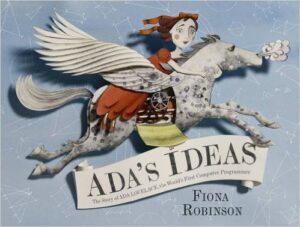
It’s a twofer! Ask for one Ada Lovelace biography, get two! Which one do I like better? According to my notes . . . my notes say I liked both of them equally. We had some in 2015 as well, it occurs to me. Does that mean we’ll get even more in 2017? Stranger things have happened.
By the way, I heard the most amusing complaint the other day that Ada gets all the bios for kids and Babbage gets none. I’ll just let you process that one in your brain yourself.
Anything But Ordinary: The True Story of Adelaide Herman, Queen of Magic by Mara Rockliff, ill. Iacopo Bruno

Lots of reason to love this. Rockliff did a lot of original research to learn about this early female magician and her most magnificent and infamous trick. Iacopo Brunos’ art just add to the lustre, since he produces gorgeous art and gets very little public appreciation for it. Luscious.
Are You an Echo?: The Lost Poetry of Misuzu Kaneko by David Jacobson, ill. Toshikado Hajiri, translations by Sally Ito and Michiko Tsuboi
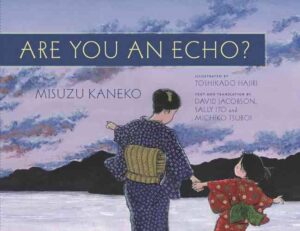
How many other lists can I get this on? At least one more, I think . . .
Cloth Lullaby: The Woven Life of Louise Bourgeois by Amy Novesky, ill. Isabelle Arsenault

You might remember Cloth Lullaby from such previous lists as 2016 Calde-nots (solely because the illustrator doesn’t reside here). It’s hard to pinpoint why exactly I like it so much, apart from the art. Maybe it’s the fact that it shows that art springs from inside you and comes out in all kinds of original, eclectic, interesting ways.
Dorothea’s Eyes by Barb Rosenstock, ill. Gerard DuBois
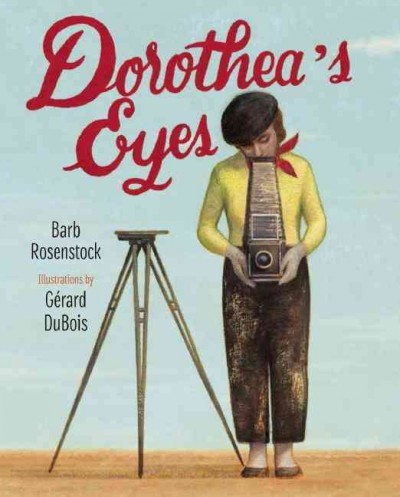
Photographers do get pic bios, but I’m still holding out for Weegee. Dorothea Lange will do in a pinch, though.
Esquivel! Space-Age Sound Artist by Susan Wood, ill. Duncan Tonatiuh

I love that I live in a world where a picture biography of a lounge music composer can even exist.
Fancy Party Gowns: The Story of Ann Cole Lowe by Deborah Blumenthal, ill. Laura Freeman
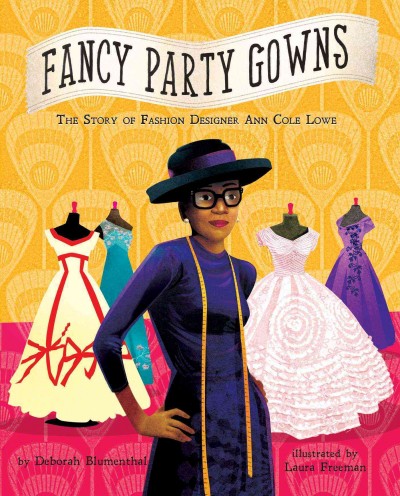
I had this sitting on my desk and someone walked past, saw the dresses, and then started cooing about the ones they knew. Very cool.
The First Step: How One Girl Put Segregation on Trial by Susan E. Goodman, ill. E.B. Lewis
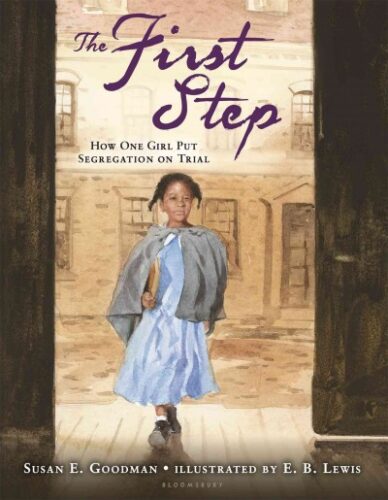
A biography of a kid! Once in a while a child will be assigned such a thing. Ruby Bridges can only be discussed by so many children. Nice to have some (much earlier) alternatives.
Gabe: A Story of Me, My Dog, and the 1970s by Shelley Gill, ill. Marc Scheff
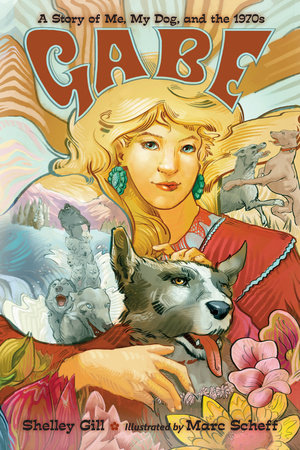
Technically this is an autobiography and not a biography but the psychedelic, nutty, dog-loving nature of this (which is to say, its awesomeness) compels me to include it.
I Dissent: Ruth Bader Ginsburg Makes Her Mark by Debbie Levy, ill. Elizabeth Baddeley
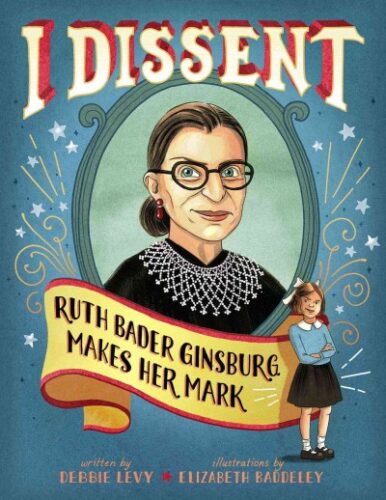
The first, I am sure, of many such biographies to exist.
Indian Boyhood: The True Story of a Sioux Upbringing by Charles Eastman, ill. Heidi M. Rasch

A new edition of a title that was released more than a hundred years ago. Debbie Reese included an earlier republication on her list of Recommended Children’s/YA/Reference/Resource Books, FYI.
The Kid from Diamond Street: The Extraordinary Story of Baseball Legend Edith Houghton by Audrey Vernick, ill. Steven Salerno
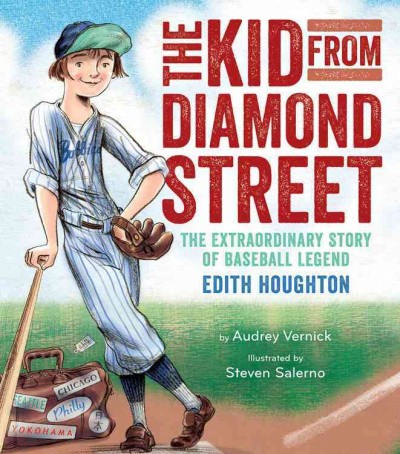
Poor sports books. They just don’t really come out all that often. Particularly if they’re about women. This one was fun and light-hearted, something we could all read once in a while.
Martin Luther “Here I Stand” by Geraldine Elschner, translated by Kathryn Bishop
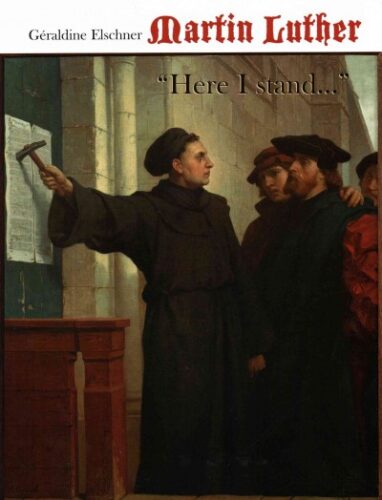
2017 will mark the 500th anniversary of the Reformation. If you’ve any kind of an older kid who wants to know more about that, start here.
Mountain Chef: How One Man Lost His Groceries Changed His Plans, and Helped Cook Up the National Park Service by Annette Bay Pimentel, ill. Rich Lo

A rather fascinating story of the Chinese-American chef who worked in what many might consider impossible circumstances. We do not HAVE a huge number of older Chinese-American biographies on our shelves. But we have this now, and that is good.
The Music in George’s Head: George Gershwin Creates Rhapsody in Blue by Suzanne Slade, ill. Stacy Innerst
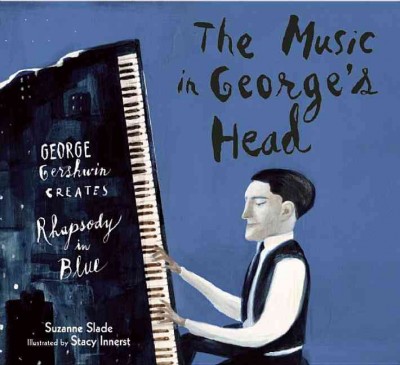
Very fun and peppy. I would have loved an accompanying CD but I suppose it’s not too hard to find the titular song if you really look.
A Poem for Peter: The Story of Ezra Jack Keats and the Creation of The Snowy Day by Andrea Davis Pinkney, ill. Lou Fancher & Steve Johnson
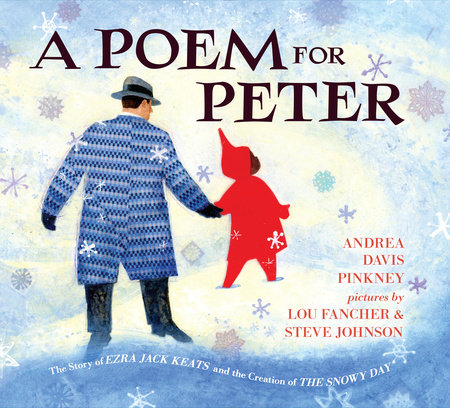
A lovely ode to a lovely man.
Presenting Buffalo Bill: The Man Who Invented the Wild West by Candace Fleming
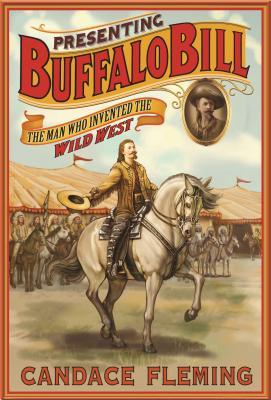
I still think the Newbery committee needs to seriously consider this book. Distinguished hardly even covers it.
Radiant Child: The Story of Young Artist Jean-Michel Basquiat by Javaka Steptoe
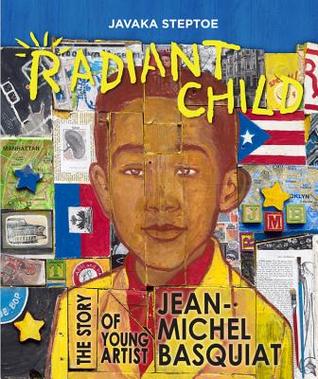
And speaking of major literary awards, oh, Caaaaaaaldecott committee . . .
Sachiko: A Nagasaki Bomb Survivor’s Story by Caren Stelson
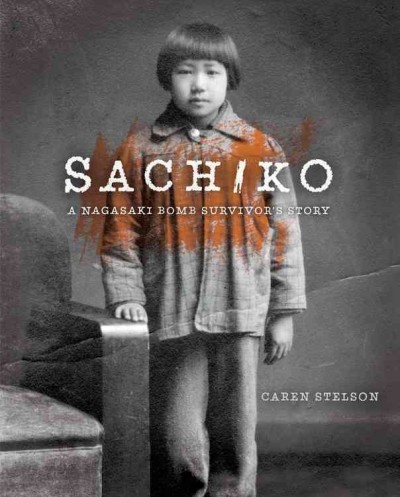
Nominated for a National Book Award, it’s amazing. And, very unfortunately, very timely at this precise moment in history.
She Stood for Freedom: The Untold Story of a Civil Rights Hero, Joan Trumpauer Mulholland by Loki Mulholland & Angela Fairwell, ill. Charlotta Janssen
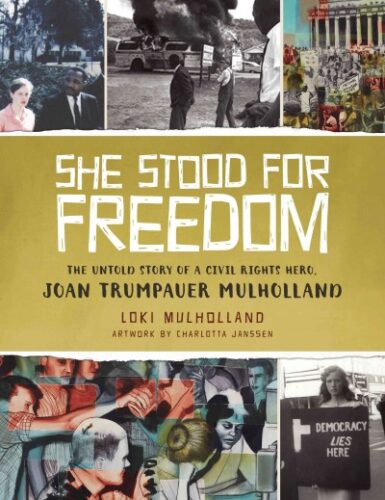
A Civil Rights activist has her story told, and published, by her own children. And what did YOU get your mom this holiday season, hmmmm?
A Spy Called James: The True Story of James Lafayette, Revolutionary War Double Agent by Anne Rockwell, ill. Floyd Cooper
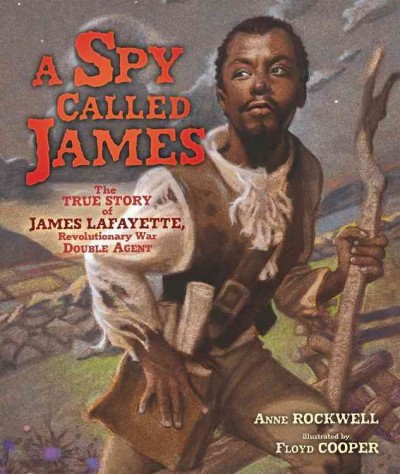
Basically, you hand this book to the kids currently obsessed with Hamilton. LOTS of Lafayette for them to enjoy, and a hero worth remembering.
Step Right Up: How Doc and Jim Key Taught the World About Kindness by Donna Janell Bowman, ill. Daniel Minter
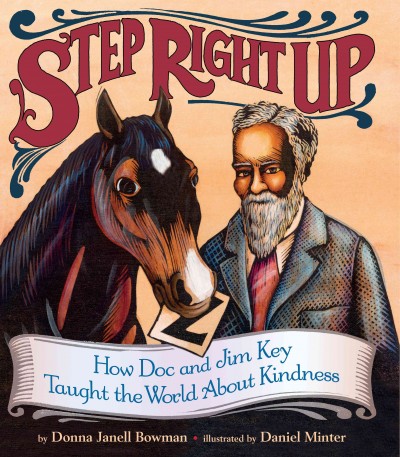
I wish I had reviewed this book this year. I’m not a horsey girl, and even I thik this is an amazing story. Basically it challenges our ideas of what an animal can and cannot learn while celebrating a pretty fascinating man as well.
Ticktock Banneker’s Clock by Shana Keller, ill. David C. Gardner

When I was a kid I had to memorize a song about Benjamin Banneker. These kids no one ever seems to study him. I’m just pleased that there’s a new bio of him out now. Let’s get more!
What Milly Did by Elise Moser, ill. Scot Ritchie
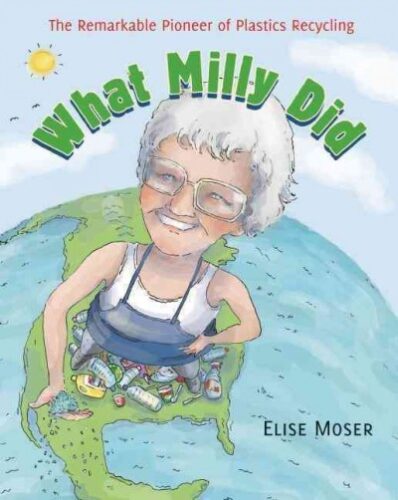
What did she do? Basically made it possible for you to recycle your plastic. You’re welcome.
When Grandma Gatewood Took a Hike by Michelle Houts, ill. Erica Magnus

And in other elderly woman news, Gatewood became famous for hiking more than any other person in the country. Crazy inspiring story, this.
Whoosh! Lonnie Johnson’s Super-Soaking Stream of Inventions by Chris Barton, ill. Don Tate
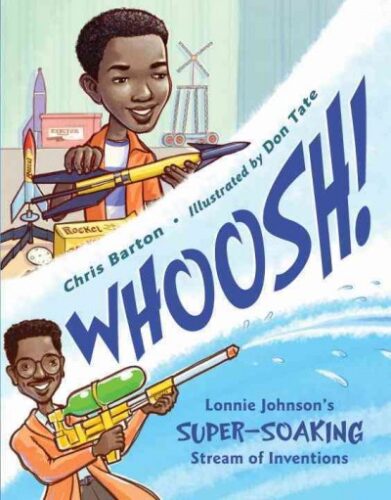
Geez, I loved this book. I love books that celebrate real inventors and Barton makes the guy sound so approachable. You’ll love him by the time you get to the end.
The William Hoy Story by Nancy Churnin, ill. Jez Tuya
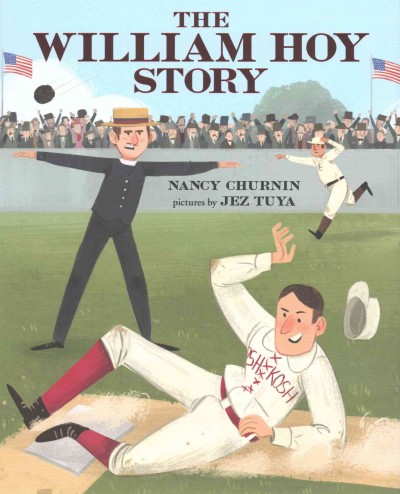
Not the first Hoy bio I’ve ever seen, but I’m happy we’ve a variety to choose from now.
You Never Heard of Casey Stengel?! by Jonah Winter, ill. Barry Blitt
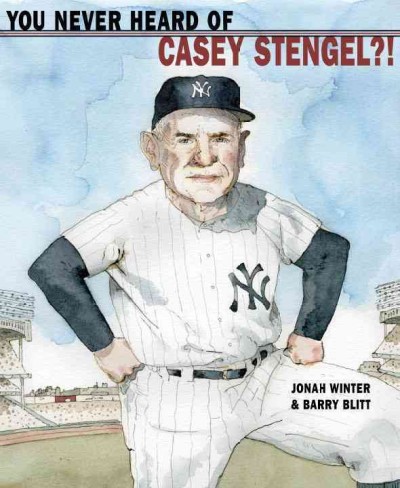
How crazy is it that this is the first picture book biography of the guy I’ve ever encountered? Winter has a blast with the subject matter. I wonder if he’ll ever consider doing one of Yogi Berra . . .
Interested in the other lists of the month? Here’s the schedule so that you can keep checking back:
December 1 – Board Books
December 2 – Board Book Adaptations
December 3 – Nursery Rhymes
December 4 – Picture Book Readalouds
December 5 – Rhyming Picture Books
December 6 – Alphabet Books
December 7 – Funny Picture Books
December 8 – Calde-Nots
December 9 – Picture Book Reprints
December 10 – Math Picture Books
December 11 – Bilingual Books
December 12 – International Imports
December 13 – Books with a Message
December 14 – Fabulous Photography
December 15 – Fairy Tales / Folktales
December 16 – Oddest Books of the Year
December 17 – Older Picture Books
December 18 – Easy Books
December 19 – Early Chapter Books
December 20 – Graphic Novels
December 21 – Poetry
December 22 – Fictionalized Nonfiction
December 23 – American History
December 24 – Science & Nature Books
December 25 – Transcendent Holiday Titles
December 26 – Unique Biographies
December 27 – Nonfiction Picture Books
December 28 – Nonfiction Chapter Books
December 29 – Novel Reprints
December 30 – Novels
December 31 – Picture Books


By:
Betsy Bird,
on 9/11/2016
Blog:
A Fuse #8 Production
(
Login to Add to MyJacketFlap)
JacketFlap tags:
2016 biographies,
Reviews,
biographies,
Roaring Brook,
Best Books,
middle grade nonfiction,
Candace Fleming,
macmillan,
Neal Porter Books,
middle grade biographies,
Best Books of 2016,
2016 reviews,
Reviews 2016,
2016 middle grade nonfiction,
Add a tag
 Presenting Buffalo Bill: The Man Who Invented the Wild West
Presenting Buffalo Bill: The Man Who Invented the Wild West
By Candace Fleming
A Neal Porter Book, Roaring Book Press (a division of Macmillan)
$19.99
ISBN: 9781596437630
Ages 9-12
On shelves September 20th
I’ve been thinking a lot lately about how we present history to our kids. Specifically I was thinking about picture book biographies and whether or not they’re capable of offering a nuanced perspective on a person’s complicated life. Will we ever see an honest picture book biography of Nixon, for example? In talking with a nonfiction author for children the other day, she asked me about middle grade books (books written for 9-12 year olds) and whether or not they are ever capable of featuring complicated subjects. I responded that often they’re capable of showing all kinds of sides to a person. Consider Laura Amy Schlitz’s delightful The Hero Schliemann or Candace Fleming’s The Great and Only Barnum. Great books about so-so people. And Candace Fleming… now there’s an author clearly drawn to historical characters with slippery slidey morals. Her latest book, Presenting Buffalo Bill is a splendid example of precisely that. Not quite a shyster, but by no means possessing a soul as pure as unblemished snow, had you asked me, prior to my reading this book, whether or not it was even possible to write a biography for children about him my answer would have been an unqualified nope. Somehow, Ms. Fleming has managed it. As tangled and thorny a life as ever you read, Fleming deftly shows how perceptions of the American West that persist to this day can all be traced to Buffalo Bill Cody. For good or for ill.
What do you think of when you think of the iconic American West? Cowboys and sage? American Indians and buffalo? Whatever is popping up in your head right now, if it’s a stereotypical scene, you’ve Buffalo Bill Cody to thank for it. An ornery son of a reluctant abolitionist, Bill grew up in a large family in pre-Civil War Kansas. Thanks to his father’s early death, Bill was expected to make money at a pretty young age. Before he knew it, he was trying his luck panning gold, learning the finer points of cowboy basics, and accompanying wagon trains. He served in the Civil War, met the love of his life, and gave tours to rich Easterners looking for adventure. It was in this way that Bill unwittingly found himself the subject of a popular paperback series, and from that he was able to parlay his fame into a stage show. That was just a hop, skip, and a jump to creating his Wild West Show. But was Bill a hero or a shyster? Did he exploit his Indian workers or offer them economic opportunities otherwise unavailable to them? Was he a caring man or a philanderer? The answer: Yes. And along the way he may have influenced how the world saw the United States of America itself.
 So let’s get back to that earlier question of whether or not you can feature a person with questionable ethics in a biography written for children. It really all just boils down to a question of what the point of children’s biographies is in the first place. Are they meant to inspire, or simply inform, or some kind of combination of both? In the case of unreliable Bill, the self-made man (I’m suddenly hearing Jerry Seinfeld’s voice saying to George Costanza, “You’re really made something of yourself”) Candace Fleming had to wade through loads of inaccurate data produced, in many cases, by Bill himself. To combat this problem, Ms. Fleming employs a regular interstitial segment in the book called “Panning for the Truth” in which she tries to pry some grain of truth out of the bombast. If a person loves making up the story of their own life, how do you ever know what the truth is? Yet in many ways, this is the crux of Bill’s story. He was a storyteller, and to prop himself up he had to, in a sense, prop up the country’s belief in its own mythology. As he was an embodiment of that mythology, he had a vested interest in hyping what he believed made the United States unique. Taking that same message to other countries in the world, he propagated a myth that many still believe in today. Therefore the story of Bill isn’t merely the story of one man, but of a way people think about our country. Bill was merely the vessel. The message has outlived him.
So let’s get back to that earlier question of whether or not you can feature a person with questionable ethics in a biography written for children. It really all just boils down to a question of what the point of children’s biographies is in the first place. Are they meant to inspire, or simply inform, or some kind of combination of both? In the case of unreliable Bill, the self-made man (I’m suddenly hearing Jerry Seinfeld’s voice saying to George Costanza, “You’re really made something of yourself”) Candace Fleming had to wade through loads of inaccurate data produced, in many cases, by Bill himself. To combat this problem, Ms. Fleming employs a regular interstitial segment in the book called “Panning for the Truth” in which she tries to pry some grain of truth out of the bombast. If a person loves making up the story of their own life, how do you ever know what the truth is? Yet in many ways, this is the crux of Bill’s story. He was a storyteller, and to prop himself up he had to, in a sense, prop up the country’s belief in its own mythology. As he was an embodiment of that mythology, he had a vested interest in hyping what he believed made the United States unique. Taking that same message to other countries in the world, he propagated a myth that many still believe in today. Therefore the story of Bill isn’t merely the story of one man, but of a way people think about our country. Bill was merely the vessel. The message has outlived him.
I’ve heard folks online say of the book that they can’t imagine the child who’d come in seeking a bio of Buffalo Bill. Since kids don’t like cowboys like they used to, the very existence of this book in the universe puzzles them. Well, putting aside the fact that enjoying a biography often has very little to do with the fact that you already were interested in the subject (or any nonfiction book, for that matter), let’s just pick apart precisely why a kid might get a lot out of reading about Bill. He was, as I have mentioned, a humbug. But he was also for more than that. He was a fascinating mix of good and evil. He took credit for terrible deeds but also participated in charitable acts (whether out of a sense of obligation or mere money is a question in and of itself). He no longer fits the mold of what we consider a hero to be. He also doesn’t fit the mold of a villain. So what does that leave us with? A very interesting human being and those, truth be told, make for the best biographies for kids.
 The fact that Bill is a subject of less than sterling personal qualities is not what makes this book as difficult as it is to write (though it doesn’t help). The real problem with Bill comes right down to his relationships with American Indians. How do we in the 21st century come to terms with Bill’s very white, very 19th century attitudes towards Native Americans? Fleming tackles this head on. First and foremost, she begins the book with “A Note From the Author” where she explains why she would use one term or another to describe the Native Americans in this book, ending with the sentence, “Always my intention when referring to people outside my own cultural heritage is to be respectful and accurate.” Next, she does her research. Primary sources are key, but so is work at the McCracken Research Library at the Buffalo Bill Center of the West in Cody, Wyoming. Her work was then vetted by Dr. Jeffrey Means (Enrolled Member of the Oglala Sioux Tribe), Associate Professor of History at the University of Wyoming in the field of Native American History, amongst others. I was also very taken with the parts of the book that quote Oglala scholar Vine Deloria Jr., explaining at length why Native performers worked for Buffalo Bill and what it meant for their communities.
The fact that Bill is a subject of less than sterling personal qualities is not what makes this book as difficult as it is to write (though it doesn’t help). The real problem with Bill comes right down to his relationships with American Indians. How do we in the 21st century come to terms with Bill’s very white, very 19th century attitudes towards Native Americans? Fleming tackles this head on. First and foremost, she begins the book with “A Note From the Author” where she explains why she would use one term or another to describe the Native Americans in this book, ending with the sentence, “Always my intention when referring to people outside my own cultural heritage is to be respectful and accurate.” Next, she does her research. Primary sources are key, but so is work at the McCracken Research Library at the Buffalo Bill Center of the West in Cody, Wyoming. Her work was then vetted by Dr. Jeffrey Means (Enrolled Member of the Oglala Sioux Tribe), Associate Professor of History at the University of Wyoming in the field of Native American History, amongst others. I was also very taken with the parts of the book that quote Oglala scholar Vine Deloria Jr., explaining at length why Native performers worked for Buffalo Bill and what it meant for their communities.
What surprised me the most about the book was that I walked into it with the pretty clear perception that Bill was a “bad man”. A guy who hires American Indians to continually lose or be exploited as part of some traveling show meant to make white Americans feel superior? Yeah. Not on board with that. But as ever, the truth is far more complicated than that. Fleming delves deep not just into the inherently racist underpinnings of Bill’s life, but also its contradictions. Bill hated Custer when he knew the guy and said publicly that the defeat of Custer was no massacre, yet would reenact it as part of his show, 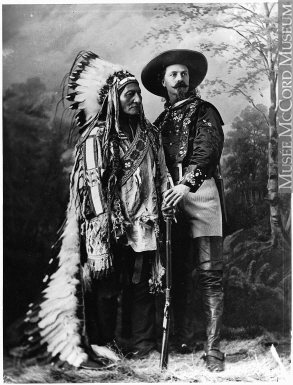 with Custer as the glorified dead hero. He would hire Native performers, pay them a living wage, and speak highly of them, yet at the same time he murdered a young Cheyenne named Yellow Hair and scalped him for his own glory. Fleming is at her best when she recounts the relationship of Bill and Sitting Bull. A photo of the two shows them standing together “as equals . . . but it is obvious that Bill is leading the way while Sitting Bull appears to be giving in. What was the subtext of the photo? That the ‘friendship’ offered in the photograph – and in Wild West performances – honored American Indian dignity only at the expense of surrender to white dominance and control.”
with Custer as the glorified dead hero. He would hire Native performers, pay them a living wage, and speak highly of them, yet at the same time he murdered a young Cheyenne named Yellow Hair and scalped him for his own glory. Fleming is at her best when she recounts the relationship of Bill and Sitting Bull. A photo of the two shows them standing together “as equals . . . but it is obvious that Bill is leading the way while Sitting Bull appears to be giving in. What was the subtext of the photo? That the ‘friendship’ offered in the photograph – and in Wild West performances – honored American Indian dignity only at the expense of surrender to white dominance and control.”
I’m writing this review in the year of 2016 – a year when Donald Trump is running for President of the United States of America. It’s given me a lot of food for thought about American humbuggery. Here in the States, we’ve created a kind of homegrown demagoguery that lauds the successful humbug. P.T. Barnum was a part of that. Huey Long had it down. And Buffalo Bill may have been a different version of these men, but I’d say he belongs to their club. There’s a thin line between “self-made man” and “making stuff up”. Thinner still when the man in question does as much good and as much evil as Buffalo Bill Cody. Fleming walks a tightrope here and I’d say it’s fair to say she doesn’t fall. The sheer difficulty of the subject matter and her aplomb at handling the topic puts her on a higher plane than your average middle grade biography. Will kids seek out Buffalo Bill’s story? I have no idea, but I can guarantee that for those they do they’ll encounter a life and a man that they will never forget.
On shelves September 20th.
Source: Galley sent from publisher for review.
Like This? Then Try:
Professional Reviews:

Sam Maggs has written a fun collected biography (as we call them in the library trade) about women in science, medicine, innovation, espionage and adventure titled - wait for it - Wonder Women.
Maggs writing style is up-to-the minute and whip smart. I'm only one third through this book and my mind is totally boggled. Without flipping another page, I would give this book 5 stars. Maggs searched long and hard and found women heroes from Asia, Europe and the Americas, of all colors and persuasions. Her mini-bios between segments - Maggs arranges the books by the various disciplines cited above - give peeks into the lives of other accomplished women. Maggs also includes interviews with women professionals who work in those disciplines.
Anyway, I am so excited by this book's content and writing style that I couldn't wait to tell you all about it. Thanks to Sam and to Quirk Books for offering this title. Not out til October! You can pre-order it here (This is not an affiliate link. I just don't like Amazon all that much.), or order from your favorite bookseller. Don't let ME tell you what to do.
There are many things you should consider before writing a biography.
http://www.writermag.com/2011/10/29/tips-writing-biography/

By:
Roger Sutton,
on 12/1/2015
Blog:
Read Roger - The Horn Book editor's rants and raves
(
Login to Add to MyJacketFlap)
JacketFlap tags:
international,
School,
feminism,
elementary school,
African-American,
women's rights,
civil rights,
islam,
biographies,
Featured,
women's history,
Lolly's Classroom,
Add a tag
Doesn’t it seem as though many of the biographies written are about men and their accomplishments? Don’t get me wrong — there are plenty of admirable men who have changed the world through their daring, innovation, and wisdom. But how about the other half of the world’s population? Women just haven’t gotten the press they deserve. Luckily, biographies today are becoming vastly diverse with the individuals they feature and the fields in which those individuals excel. And that includes some great new biographies about women. Take a look at these three to share with your students (both male and female). The first is for younger students (grades K-3) and the other two are good for upper elementary (grades 4-6):
 Dear Malala, We Stand With You by Rosemary McCarney with Plan International
Dear Malala, We Stand With You by Rosemary McCarney with Plan International
There have been several books written by, and about, Malala Yousafzai, but this picture book version is unique. It begins with a short biography of Malala and her 2012 shooting by the Taliban for being outspoken about education for girls, and her life in England now. The bulk of the book is a series of exquisite photographs of girls around the world and brief text describing their desire for an education, despite the many social, political, and economic restraints placed on them. The title ends with ways for the reader to help further Malala’s cause.
 The Girl from the Tar Paper School: Barbara Rose Johns and the Advent of the Civil Rights Movement by Teri Kanefield
The Girl from the Tar Paper School: Barbara Rose Johns and the Advent of the Civil Rights Movement by Teri Kanefield
Barbara Johns, an African American high school student in Virginia in 1951, was appalled at the conditions of the make shift classrooms in their segregated school. Acting well beyond her years, she organized a peaceful walk out, demonstration, and boycott among her senior class to demand new facilities. They were ridiculed by the local school board, government, and police force. The NAACP agreed to take on the case, only if the students changed their demands to full integration. They agreed, and their case contributed to the 1954 Supreme Court ruling in Brown vs. Board of Education. The story begins with Barbara’s senior year, and flashes back to her early years, and then beyond. Remarkably, she grew up to become a school librarian! The book is filled with captioned photos, sidebars, quotations, and primary sources. The large font and strong voice makes for a swift read. The concluding author’s note is enlightening, and the timeline, endnotes, and extensive bibliography complete the book.
 Rad American Women A-Z by Kate Shatz, illustrated by Miriam Klein Stahl
Rad American Women A-Z by Kate Shatz, illustrated by Miriam Klein Stahl
This is a collective biography of 26 women, described as “rebels, trailblazers, and visionaries who shaped our history…and our future” (cover copy). They represent diverse fields, ethnicities, ages, and geographic locations. Beginning with Angela Davis, and ending with Zora Neale Hurston, each biographee’s personality, challenges, and accomplishments are described in engaging text and accompanied by a simple black and white block cut illustration. The book concludes with an end note, a list of “26 Things that you can do to be rad!” (unp.)., and a list of resources.
Editor’s note: for many more recommended biographies of women, follow these tags: Biographies; Women’s History
The post Biographies with girl power appeared first on The Horn Book.
Last week I wrote about the kind of research I do when I get an idea. I have to answer two key questions: Is it kid-friendly, and is it a new idea or new slant on an old subject? Henry Ford's plastic soybean car fits the bill, so I move to question number three: Will there be enough information about the subject to make the project viable?
I have run into dead ends before. Getting my hopes up about some arcane topic only to discover that the little tidbit that tantalized me initially was all there was. No historical records existed. I suppose I could have made it my life's work to scrape together the few remnants that remained and built on it so that I became the expert, but my heart, and my attention span, was just not that into it. I'll leave that to some grad student looking for a dissertation topic.
But my gut feeling is that there is more to my plastic car story than what I have uncovered so far. After all, Henry Ford is one of the most famous innovators of the 20th century. So, my first task is to read as many biographies as I can about the man. Doing research for a nonfiction book is like creating backstories for fictional characters. You need to find out what makes them tick. Where did they come from? What and who influenced them? There are a lot of biographies about Ford, so I select the ones written by reputable researchers; ones with lots of end notes and a big bibliographies that will direct me to other sources. I start to build my own working bibliography.
Your real characters need to be grounded in a time and place. You need to know about the world they lived in. For this project that means reading about the Roarin' Twenties, the Great Depression, and about life in Michigan.
I also read up on ancillary topics, too, like soybeans (Did you know there are more than 300 kinds?), and about the Ford company (FYI: The ill-fated Edsel was named after Ford's son, who was named after Ford's best friend, who was a food chemist at the plant.)
My working bibliography grows exponentially, and I know that there is more than enough information out there to make my Henry Ford story a go. And that's a good thing, because my editor already approved it. :)
Next Week: Step 3 - Looking for those Primary Documents
By:
Guest Posts,
on 10/18/2015
Blog:
The Children's Book Review
(
Login to Add to MyJacketFlap)
JacketFlap tags:
Laurie Wallmark,
Cultural Wisdom,
Best Kids Stories,
April Chu,
My Writing and Reading Life,
Ada Byron Lovelace,
Computer Programming Books,
Ages 4-8,
Picture Book,
Picture Books,
Technology,
Non-Fiction,
Author Interviews,
Biographies,
featured,
Books for Girls,
Women's History,
Add a tag
Laurie Wallmark writes exclusively for children. The picture book biography, Ada Byron Lovelace and the Thinking Machine (Creston Books, October 2015), is Laurie’s first book.

By:
Betsy Bird,
on 9/9/2015
Blog:
A Fuse #8 Production
(
Login to Add to MyJacketFlap)
JacketFlap tags:
2015 Sibert Award contender,
Best Books of 2015,
Reviews 2015,
2015 reviews,
2015 nonfiction,
2015 nonfiction picture books,
2015 biography,
Reviews,
nonfiction,
Don Tate,
Chris Barton,
nonfiction picture books,
biographies,
Best Books,
Eerdmans Books for Young Readers,
picture book biographies,
Add a tag
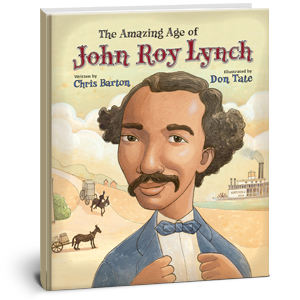 The Amazing Age of John Roy Lynch
The Amazing Age of John Roy Lynch
By Chris Barton
Illustrated by Don Tate
Eerdmans Books for Young Readers
$17.00
ISBN: 978-0-8028-5379-0
Ages 4-8
On shelves now
“It’s the story of a guy who in ten years went from teenage field slave to U.S. Congressman.” Come again? That’s the pitch author Chris Barton pulled out when he wanted to describe this story to others. You know, children’s book biographies can be very easy as long as you cover the same fifteen to twenty people over and over again. And you could forgive a child for never imagining that there were remarkable people out there beyond Einstein, Tubman, Jefferson, and Sacajawea. People with stories that aren’t just unknown to kids but to whole swaths of adults as well. So I always get kind of excited when I see someone new out there. And I get extra especially excited when the author involved is Chris Barton. Here’s a guy who performed original research to write a picture book biography of the guys who invented Day-Glo colors (The Day-Glo Brothers) so you know you’re in safe hands. The inclusion of illustrator Don Tate was not something I would have thought up myself, but by gum it turns out that he’s the best possible artist for this story! Tackling what turns out to be a near impossible task (explaining Reconstruction to kids without plunging them into the depths of despair), this keen duo present a book that reads so well you’re left wondering not just how they managed to pull it off, but if anyone else can learn something from their technique.
From birth until the age of sixteen John Roy Lynch was a slave. The son of an overseer who died before he could free his family, John Roy began life as a house slave but was sent to the fields when his high-strung mistress made him the brunt of her wrath. Not long after, The Civil War broke out and John Roy bought himself a ride to Natchez and got a job. He started out as a waiter than moved on to pantryman, photographer, and in time orator and even Justice of the Peace. Then, at twenty-four years of age, John Roy Lynch was elected to the Mississippi House of Representatives where he served as Speaker of the House. The year was 1869, and these changes did not pass without incident. Soon an angry white South took its fury out on its African American population and the strides that had been made were rescinded violently. John Roy Lynch would serve out two terms before leaving office. He lived to a ripe old age, dying at last in 1939. A Historical Note, Timeline, Author’s Note, Illustrator’s Note, Bibliography of books “For Further Reading”, and map of John’s journey and the Reconstructed United States circa 1870 appear at the end.
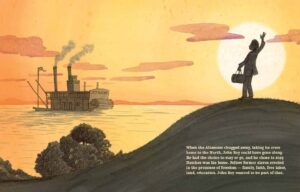 How do you write a book for children about a time when things were starting to look good and then plummeted into bad for a very very long time? I think kids have this perception (oh heck, a bunch of adults too) that we live in the best of all possible worlds. For example, there’s a children’s book series called Infinity Ring where the basic premise is that bad guys have gone and changed history and now it’s up to our heroes to put everything back because, obviously, this world we live in right now is the best. Simple, right? Their first adventure is to make sure Columbus “discovers” America so . . . yup. Too often books for kids reinforce the belief that everything that has happened has to have happened that way. So when we consider how few books really discuss Reconstruction, it’s not exactly surprising. Children’s books are distinguished, in part, by their capacity to inspire hope. What is there about Reconstruction to cause hope at all? And how do you teach that to kids?
How do you write a book for children about a time when things were starting to look good and then plummeted into bad for a very very long time? I think kids have this perception (oh heck, a bunch of adults too) that we live in the best of all possible worlds. For example, there’s a children’s book series called Infinity Ring where the basic premise is that bad guys have gone and changed history and now it’s up to our heroes to put everything back because, obviously, this world we live in right now is the best. Simple, right? Their first adventure is to make sure Columbus “discovers” America so . . . yup. Too often books for kids reinforce the belief that everything that has happened has to have happened that way. So when we consider how few books really discuss Reconstruction, it’s not exactly surprising. Children’s books are distinguished, in part, by their capacity to inspire hope. What is there about Reconstruction to cause hope at all? And how do you teach that to kids?
Barton’s solution is clever because rather than write a book about Reconstruction specifically, he’s found a historical figure that guides the child reader effortlessly through the time period. Lynch’s life is perfect for every step of this process. From slavery to a freedom that felt like slavery. Then slow independence, an education, public speaking, new responsibilities, political success, two Congressional terms, and then an entirely different life after that (serving in the Spanish-American War as a major, moving to Chicago, dying). Barton shows his rise and then follows his election with a two-page spread of KKK mayhem, explaining that the strides made were taken back “In a way, the Civil War wasn’t really over. The battling had not stopped.” And after quoting a speech where Lynch proclaims that America will never be free until “every man, woman, and child can feel and know that his, her, and their rights are fully protected by the strong arm of a generous and grateful Republic,” Barton follows it up with, “If John Roy Lynch had lived a hundred years (and he nearly did), he would not have seen that come to pass.” Barton guides young readers to the brink of the good and then explains the bad, giving context to just how long the worst of it continued. He also leaves it up to them to determine if Lynch’s dream has come to fruition or not (classroom debate time!).
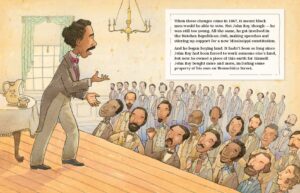 And he plays fair. These days I read nonfiction picture books with my teeth clenched. Why? Because I’ve started holding them to high standards (doggone it). And there are so many moments in this book that could have been done incorrectly. Heck, the first image you see when you open it up is of John Roy Lynch’s family, his white overseer father holding his black wife tenderly as their kids stand by. I saw it and immediately wondered how we could believe that Lynch’s parents ever cared for one another. Yet a turn of the page and Barton not only puts Patrick Lynch’s profession into context (“while he may have loved these slaves, he most likely took the whip to others”) but provides information on how he attempted to buy his wife and children. Later there is some dialogue in the book, as when Lynch’s owner at one point joshes with him at the table and John Roy makes the mistake of offering an honest answer. Yet the dialogue is clearly taken from a text somewhere, not made up to fit the context of the book. I loathe faux dialogue, mostly because it’s entirely unnecessary. Barton shows clearly that one need never rely upon it to make a book exemplary.
And he plays fair. These days I read nonfiction picture books with my teeth clenched. Why? Because I’ve started holding them to high standards (doggone it). And there are so many moments in this book that could have been done incorrectly. Heck, the first image you see when you open it up is of John Roy Lynch’s family, his white overseer father holding his black wife tenderly as their kids stand by. I saw it and immediately wondered how we could believe that Lynch’s parents ever cared for one another. Yet a turn of the page and Barton not only puts Patrick Lynch’s profession into context (“while he may have loved these slaves, he most likely took the whip to others”) but provides information on how he attempted to buy his wife and children. Later there is some dialogue in the book, as when Lynch’s owner at one point joshes with him at the table and John Roy makes the mistake of offering an honest answer. Yet the dialogue is clearly taken from a text somewhere, not made up to fit the context of the book. I loathe faux dialogue, mostly because it’s entirely unnecessary. Barton shows clearly that one need never rely upon it to make a book exemplary.
Finally, you just have to stand in awe of Barton’s storytelling. Not making up dialogue is one thing. Drawing a natural link between a life and the world in which that life lived is another entirely. Take that moment when John Roy answers his master honestly. He’s banished to hard labor on a plantation after his master’s wife gets angry. Then Barton writes, “She was not alone in rage and spite and hurt and lashing out. The leaders of the South reacted the same way to the election of a president – Abraham Lincoln – who was opposed to slavery.” See how he did that? He managed to bring the greater context of the times in line with John Roy’s personal story. Many is the clunky picture book biography that shoehorns in the era or, worse, fails to mention it at all. I much preferred Barton’s methods. There’s an elegance to them.
I’ve been aware of Don Tate for a number of years. No slouch, the guy’s illustrated numerous children’s books, and even wrote (but didn’t illustrate) one that earned him an Ezra Jack Keats New Writer Honor Award (It Jes’ Happened: When Bill Traylor Started to Draw). His is a seemingly simple style. I wouldn’t exactly call it cartoony, but it is kid friendly. Clear lines. Open faces. His watercolors go for honesty and clarity and do not come across as particularly evocative. But I hadn’t ever seen the man do nonfiction, I’ll admit. And while it probably took me a page or two to understand, once I realized why Don Tate was the perfect artist for “John Roy Lynch” it all clicked into place. You see, books about slavery for kids usually follow a prescribed pattern. Some of them go for hyperrealism. Books with art by James Ransome, Eric Velasquez, Floyd Cooper, or E.B Lewis all adhere closely to this style. Then there are the books that are a little more abstract. Books with art by R. Gregory Christie, for example, traipse closely to art worthy of Jacob Lawrence. And Shane W. Evans has a style that’s significantly artistic. A more cartoony style is often considered too simplistic for the heavy subject matter or, worse, disrespectful. But what are we really talking about here? If the book is going to speak honestly about what slavery really was, the subjugation of whole generations of people, then art that hews closely to the truth is going to be too horrific for kids. You need someone who can cushion the blow, to a certain extent. It isn’t that Tate is shying away from the horrors. But when he draws it it loses some of its worst terrors. There is one two-page spread in this book that depicts angry whites whipping and lynching their black neighbors.  It’s not shown as an exact moment in time, but rather a composite of events that would have happened then. And there’s something about Tate’s style that makes it manageable. The whip has not yet fallen and the noose has not yet been placed around a neck, but the angry mobs are there and you know that the worst is imminent. Most interesting to me too is that far in the background a white woman and her two children just stand there, neither approving nor condemning the action. I think you could get a very good conversation out of kids about this family. What are they feeling? Whose side are they on? Why don’t they do something?
It’s not shown as an exact moment in time, but rather a composite of events that would have happened then. And there’s something about Tate’s style that makes it manageable. The whip has not yet fallen and the noose has not yet been placed around a neck, but the angry mobs are there and you know that the worst is imminent. Most interesting to me too is that far in the background a white woman and her two children just stand there, neither approving nor condemning the action. I think you could get a very good conversation out of kids about this family. What are they feeling? Whose side are they on? Why don’t they do something?
And Tate has adapted his style, you can see. Compare the heads and faces in this book to those in one of his earlier books like, Ron’s Big Mission by Rose Blue, in this one he modifies the heads, making them a bit smaller, in proportion with the rest of the body. I was particularly interested in how he did faces as well. If you watch Lynch’s face as a child and teen it’s significant how he keeps is features blank in the presence of white people. Not expressionless, but devoid of telltale thoughts. As a character, the first time he smiles is when he finally has a job he can be paid for. With its silhouetted moments, good design sense, tapered but not muted color palette, and attention to detail, Mr. Tate puts his all into what is by far his most sophisticated work to date.
This year rage erupted over the fact that the Confederate flag continues to fly over the South Carolina statehouse grounds. To imagine that the story Barton relates here does not have immediate applications to contemporary news is facile. As he mentions in his Author’s Note, “I think it’s a shame how little we question why the civil rights movement in this country occurred a full century following the emancipation of the slaves rather than immediately afterward.” So as an author he found an inspiring, if too little known, story of a man who did something absolutely astounding. A story that every schoolchild should know. If there’s any justice in the universe, after reading this book they will. Reconstruction done right. Nonfiction done well.
On shelves now.
Source: Final copy sent from publisher for review.
Like This? Then Try:
Professional Reviews:
Misc: For you, m’dear? An educator’s guide.
Videos: A book trailer and everything!


By:
Roger Sutton,
on 5/13/2015
Blog:
Read Roger - The Horn Book editor's rants and raves
(
Login to Add to MyJacketFlap)
JacketFlap tags:
Reviews,
Nonfiction,
intermediate,
Recommended Books,
Horn Book Magazine,
biographies,
Reviews of the Week,
hbmmay15,
hbmmay15revs,
Add a tag
 Tricky Vic: The Impossibly True Story of the
Man Who Sold the Eiffel Tower
Tricky Vic: The Impossibly True Story of the
Man Who Sold the Eiffel Tower
by Greg Pizzoli; illus. by the author
Intermediate Viking 48 pp.
3/15 978-0-670-01652-5 $17.99
Amidst the current plethora of picture-book biography role models, it’s nice to see a book about a con artist. “Ah, yes. But an artist all the same.” “Count Victor Lustig” (born Robert Miller) fleeced his way as a card shark back and forth across the Atlantic until WWI put an end to that; after obtaining the blessing of Al Capone, Lustig went into a “money box” counterfeit-counterfeiting scam in Chicago before returning to Europe and his greatest trick of all — convincing a Parisian businessman that the Eiffel Tower was about to be dismantled and taking his cash bid for the salvage. Lustig’s exploits did not end there, but they did end eventually, with the apparently nine-lived (and forty-five-pseudonymed) con man finishing his days on Alcatraz Island. With a sophisticated, genially sinister design incorporating cartoons and photographs into a low-toned red and mustard palette, the book signals the right kind of reader: one for whom venality is no obstacle to a good time. There’s no moral here, except perhaps for the one that closes the excellent author’s note: “Stay sharp.” Sidebars throughout provide historical context, and a glossary and thorough source list will give young crooks cover for school reports.
From the May/June 2015 issue of The Horn Book Magazine.

The post Review of Tricky Vic appeared first on The Horn Book.
By:
Bianca Schulze,
on 4/28/2015
Blog:
The Children's Book Review
(
Login to Add to MyJacketFlap)
JacketFlap tags:
Books About Louis Agassiz Fuertes,
José Martí,
Natural History Books,
Aliona Bereghici,
Angela DiTerlizzi,
Picture Books,
Birds,
Dr. Seuss,
Book Giveaway,
Artists,
Biographies,
Munro Leaf,
Margarita Engle,
Brendan Wenzel,
Mercer Mayer,
Giveaways,
American Museum of Natural History,
Add a tag
Enter to win a copy of The Sky Painter, by Margarita Engle and illustrated by Aliona Bereghici.
Giveaway begins April 28, 2015, at 12:01 A.M. PST and ends May 27, 2015, at 11:59 P.M. PST.
By:
Guest Posts,
on 4/28/2015
Blog:
The Children's Book Review
(
Login to Add to MyJacketFlap)
JacketFlap tags:
Cultural Wisdom,
Aliona Bereghici,
Angela DiTerlizzi,
Books About Louis Agassiz Fuertes,
José Martí,
Natural History Books,
Ages 4-8,
Picture Books,
Birds,
Dr. Seuss,
Art,
Artists,
Biographies,
Books for Boys,
Munro Leaf,
Margarita Engle,
Animal Books,
American Museum of Natural History,
Brendan Wenzel,
Mercer Mayer,
Add a tag
Margarita Engle, author of The Sky Painter, selected these five family favorite children's books.
If you're looking for an awesome online report option for biographies or nonfiction texts, you'll love Hstry.co. Hstry is a site where students can create cool looking, interactive timelines with text, images, videos, and embedded quizzes.
These are really good looking timelines! If you don't believe me, check out this sample on World War I, or this one about the History of Immigration in theUnited States. And your students can create timelines that look just as good.
In my case, however, I didn't want a timeline. My sixth graders had just read nonfiction books of choice, with topics as varied as fashion, venomous animals, and accidental inventions. I needed a venue that would permit them to show off their topic's most interesting facts. So in my case, my students used the site to create linear collages rather than timelines. The video below (which I created and hosted for free at Screencast-O-Matic) walks you through one of those projects.
I spent a good deal of time modeling the process of creating a Hstry timeline in class (and you'll need to do the same), but some students were still somewhat fuzzy on all the steps even after I finished. Plus, three students were absent the day I modeled the how-to. So I created the following video which walks students through the process. Note: do not make a video when all you have for audio production is a dollar store microphone. The project sheet to which the video refers is here if you care to see it.
One downside to this site is that (at present) students cannot publicly share their projects. So in my class we did mini field trips. Students logged in and set up their projects on their screens. I then randomly distributed our class name cards, and students went and visited the Hstry project belonging to the classmate whose name appeared on the card. While visiting, my students provided feedback via a form I created. After two visits, all students were allowed to return to their projects, read the feedback form, and then make corrections as needed. Following these revisions, we conducted two more staged visits, and then students were permitted to visit as they chose or return to their own laptop to improve their work.
Sample Applications for the Classroom:
- Create a timeline of historical events.
- Create a biographical timeline.
- Embed multiple videos, each with its own quiz.
- Do what my students did, and use it as a linear collage for a nonfiction book.
- Create your own timeline (as a teacher) to provide students with needed historical context they need before a new unit.
Notes and Caveats:
- Again, student timelines are not publicly visibly (yet), and may never be, so plan accordingly.
- Check-off sheets like the one I created are key to help students manage the content they're adding.
- Looking for other creative, tech-oriented ways to create book reports? Check out these 23 iPad Alternatives to the Book Report.
- No, I did not really read the book about chickens, but I did spend summers running a farm at camp, so I know my way around a chicken coop.

By:
Betsy Bird,
on 3/26/2015
Blog:
A Fuse #8 Production
(
Login to Add to MyJacketFlap)
JacketFlap tags:
Best Books of 2015,
Reviews 2015,
2015 reviews,
2015 nonfiction,
2015 biography,
2016 Sibert Award candidate,
Reviews,
nonfiction,
nonfiction picture books,
biographies,
Best Books,
picture book biographies,
Add a tag
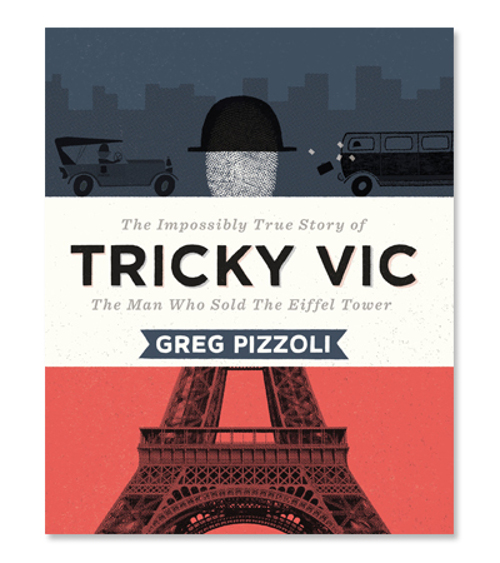 Tricky Vic: The Impossibly True Story of the Man Who Sold the Eiffel Tower
Tricky Vic: The Impossibly True Story of the Man Who Sold the Eiffel Tower
By Greg Pizzoli
Viking (an imprint of Penguin Group USA)
$17.99
ISBN: 978-0-670-01652-5
Ages 8-11
On shelves now
I was listening to a favorite podcast of mine the other day when the panelists began discussing the difference between heist films and con man films. A heist film is one where the entire movie is a build-up to a great and fabulous heist. Ocean’s 11 and that sort of thing. In the children’s book world this would be The Great Greene Heist. A con man film is different. There you have a single individual, and not necessarily a heroic one either. Catch Me If You Can is a con man film. And on the children’s book side? Honestly, we don’t have a lot of them. Maybe Pickle by Kim Baker but that’s a stretch. It really wasn’t until I laid eyes on Greg Pizzoli’s Tricky Vic that I could appreciate what I had been missing all these years. Told with a relaxed easygoing style, Pizzoli takes one of the world’s most notorious individuals in the con game, and refuses to humanize him. Here we see a character that was larger than life. Makes sense that he’d try to sell a structure that was in many ways his equal.
In 1890 he was born Robert Miller, but that didn’t last. Names came and went and by the time he was an adult, Miller was a professional gambler turned con artist. His preferred method of payment was gambling on transatlantic ocean liners but then along came WWI and Miller, now calling himself Count Victor Lustig, needed a new occupation. Through a little low level trickery he got the blessing of Al Capone and then set about bilking the easy rich. But his greatest feat, and the one that would put him down in the history books, was his successful con of “selling” the Eiffel Tower to prospective buyers. Though in time he was eventually caught and jailed (in Alcatraz, no less), Vic’s odd life shines a spotlight on those individuals willing to get ahead on our own greed and misplaced hope. Backmatter includes an Author’s Note, Glossary, Selected Sources, and a note on the art.
Every great picture book biography finds something about an individual that is interesting to child readers. In The Boy Who Loved Math it was Paul Erdos’s sheer enthusiasm and childlike goofiness. In The Noisy Paintbox it was Kandinsky’s ability to translate sound to sight and back again. And in Tricky Vic it’s shamelessness. Kids don’t often encounter, in any form, adults that unapologetically do wrong. Vic ultimately pays for his crimes, and in many ways that’s the only way you can get away with what Pizzoli is doing here. You see, the trouble with con man storylines is that they’re just too much fun. You can’t help but root for Vic when he pulls the old Romanian Money Box scheme or when he cons the great Al Capone himself. Really one of the few objections I’ve heard lobbed against the book is a question as to whether or not kids will have any interest in an obscure two-bit criminal. But like all great nonfiction authors for kids, Pizzoli knows that children’s biographies do not begin and end with Amelia Earhart and Abraham Lincoln. Sometimes kids appreciate far more the biographies of the people who didn’t go about with halos hovering around their ears. There’s room on our shelves for the baddies.
Now when Greg Pizzoli debuted with his picture book The Watermelon Seed two years ago, there was nothing to indicate to me that he had any inclination to go the nonfiction route. “The Watermelon Seed” utilizes a three-color print job and distinctly retro aesthetic. That aesthetic remains intact in Tricky Vic but Pizzoli but the technique has been cranked up to eleven. In “A Note About the Art in This Book” at the back, Pizzoli says that the illustrations seen here were “created using pencil, ink, rubber stamps, halftone photographs, silkscreen, Zipatone, and Photoshop.” The end result is a book that straddles the line between those picture books actually concocted in the 1930s and a distinctly contemporary creation.
Dig a little deeper and Pizzoli’s illustration choices go beyond mere novelty. The choice to render Vic’s head as a thumbprint has so many different uses. With a mere change in tone or color, Pizzoli can render his personality and character different from one page to the next. This chameleon of a man couldn’t ask for better representation. But much of the success of the book lies in how it tackles the question of Vic as a bad person. Pizzoli’s choice to make Vic expressionless throughout the book is key to this. Because kids aren’t exactly reading about a role model, it’s important that Vic never look like he’s having too much fun. Remove his mouth and eyes and voila! An instant blank slate on which to project your storyline. Let the facts speak for themselves.
And speaking of facts, in no time in our nation’s history have picture book biographies for children fallen under as much scrutiny as they do today. Time was the D’Aulaires could write varying fictional accounts of everyone from Pocahontas to Abraham Lincoln and win Caldecotts for their efforts. These days, the debate rages around how much an author is allowed to do and the crux of that debate centers on made up dialogue. I am firmly of the opinion that made up dialogue is unnecessary in a children’s book biography. However, when handled creatively, there are exceptions to every rule. And “Tricky Vic” is, if nothing else, vastly creative. If you read the book the actual text is all factual. There is some mucking about with the timeline of one of the major events in Vic’s life, but Pizzoli comes clean about that in his Author’s Note in the back, and I give a lot of credit to folks who fess up plainly. Getting back to the text, look a little closer and you’ll see that there is some made up dialogue but Pizzoli keeps it at a minimum and gives it its own separate space. Little speech balloons between the characters will occasionally crop up at the bottom of the pages. The feeling is that these are interstitial fictional bits that simply support the rest of the text. A reader doesn’t walk away from them thinking that they’re strict representations of the past. They are, instead, a little colorful complement to the text to give it a lighter bouncier feel.
I recently conducted a Salon in my library on children’s nonfiction picture book illustration and historical accuracy. During the course of the talk we discussed Vincent Kirsch’s work on Gingerbread for Liberty and the times when a bouncier, more light-hearted feel to the illustrations best fit the text. In Tricky Vic Pizzoli isn’t going for a meticulous reconstruction of past events in his art. He’s going for something with a historical feel, but with fun built in as well. The design elements are what really step things up a notch. I also loved the factual sidebars that complemented the text but never dominate. As kids read they encounter sections talking about Prohibition, The Tower’s Critics (the folks who hated it from the get-go, that is), the Hotel de Crillon, Counterfeiting, and Alcatraz. The end result is as dynamic as it is informative.
I wonder vaguely if this book will receive any challenges from concerned parents living in the mistaken belief that Pizzoli has penned a How To manual for little budding criminals. As I mentioned before, the line between celebrating your biographical picture book subject and simply reporting on their life is thin. The beauty of Tricky Vic, I think, is that his life is just as wild and weird as any fictional character. There is value in showing kids the fools of the past. I don’t think anyone will walk away from this thinking Vic had it all figured out, but I do think a fair number of them might want to follow-up on Pizzoli’s Selected Sources for a little independent reading of their own. And if this book encourages just one kid to rethink their attitude towards nonfiction, then this title has earned its place in the world. The gorgeous art and great writing are just gravy. For one. For all. Un-forgettable.
On shelves now.
Source: Final copy sent from publisher for review.
Like This? Then Try:
Other Blog Reviews: 100 Scope Notes
Professional Reviews: The New York Times
Interviews: Greg Pizzoli discusses his technique at Seven Impossible Things Before Breakfast.


By: JOANNA MARPLE,
on 3/16/2015
Blog:
Miss Marple's Musings
(
Login to Add to MyJacketFlap)
JacketFlap tags:
picture books,
biographies,
Paula Yoo,
Jamel Akib,
Nobel Peace Prize,
Lee & Low,
Bangladesh,
we need diverse books campaign,
Grameen Bank,
2015 Diversity Reading Challenge,
Diversity Reading Challenge,
micro loans,
Muhammad Yunnus and the Village Bank,
Twenty Two Cents,
Add a tag
I naturally gravitate towards diversity in my reading, and my blog has had this as a focus since its beginning, but this challenge has pushed me to seek out texts in a more targeted way. Today’s story, however, came to … Continue reading →

By:
rgarcia406,
on 2/13/2015
Blog:
The Open Book
(
Login to Add to MyJacketFlap)
JacketFlap tags:
black history month,
Race,
biographies,
African/African American Interest,
Lee & Low Likes,
Diversity, Race, and Representation,
History,
Diversity,
picture books,
Add a tag
A heads up to our blog readers that we have two great sales happening now to celebrate Black History Month!
We’re offering 25% off two Black History Month collections on leeandlow.com through the end of the month. Kick-start your Black History book collection or mix things up with great books that can be used all year long.
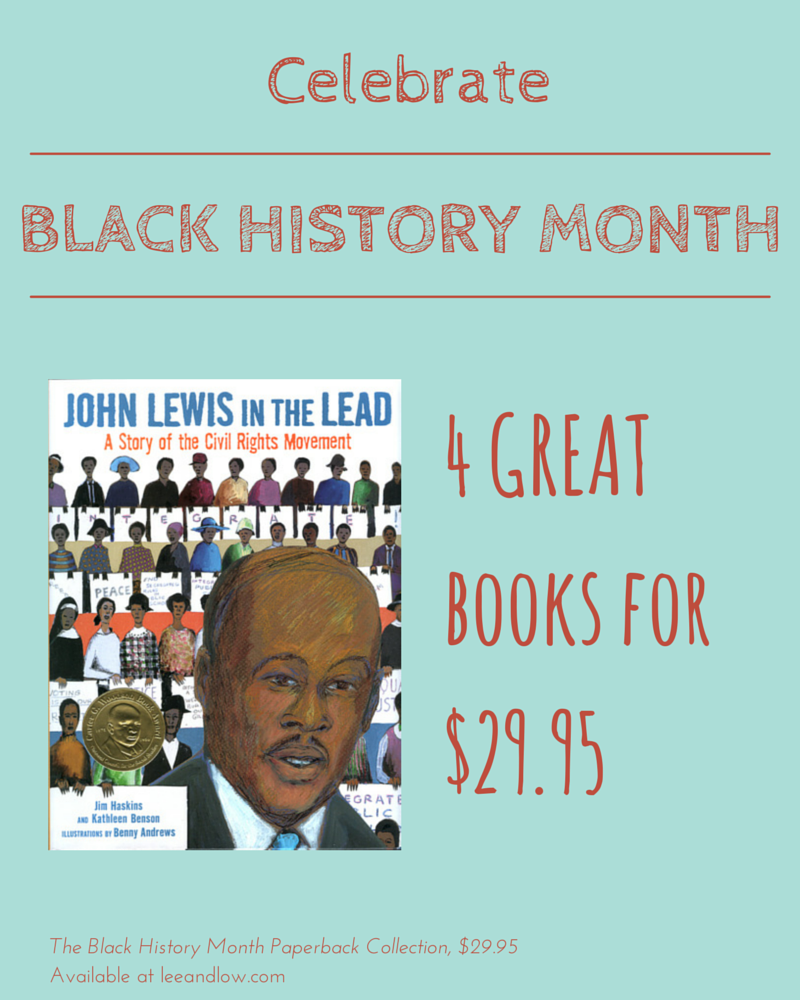
Both collections offer biographies of great leaders who excelled in many different fields including writing, politics, music, and the culinary arts and will appeal to a wide range of readers.
Our Black History Month Paperback Collection features four award-winning picture books in paperback:
John Lewis in the Lead
I and I Bob Marley
George Crum and the Saratoga Chip
Love to Langston
Originally $40, it’s currently on sale for $29.95.
Our Black History Month Special Collection features five award winning picture book biographies in a mix of paperback and hard cover editions:
John Lewis in the Lead
George Crum and the Saratoga Chip
It Jes’ Happened
Love to Langston
Baby Flo
Originally $65.70, it’s currently on sale for $50.
Title: The Iridescence of Birds – A Book About Henri Matisse Written by: Patricia MacLachlan Illustrated by: Hadley Hooper Published by: A Neal Porter Book, Roaring Book Press, 2014 Themes/Topics: Henri Matisse, painters, the influence of childhood, France Suitable for ages: 5-11 40 pages, … Continue reading →

By:
Roger Sutton,
on 2/4/2015
Blog:
Read Roger - The Horn Book editor's rants and raves
(
Login to Add to MyJacketFlap)
JacketFlap tags:
Nonfiction,
middle school,
intermediate,
Recommended Books,
Horn Book Magazine,
biographies,
Reviews of the Week,
hbmjan15,
hbmjan15revs,
Reviews,
Add a tag
 The Boy Who Harnessed the Wind: Young Readers Edition
The Boy Who Harnessed the Wind: Young Readers Edition
by William Kamkwamba and Bryan Mealer; illus. by Anna Hymas
Intermediate, Middle School Dial 294 pp.
2/15 978-0-8037-4080-8 $16.99 g
As a young boy growing up in Malawi, William Kamkwamba believed in — and was fearful of — magic. As he got a bit older, he was drawn to science. He tinkered with toy trucks and “monster wagons” (“chigiriri, that looked like American go-carts”) and began reading old science books and dreaming up inventions. When heavy rains, followed by drought, hit his country and the corrupt government didn’t respond, young William used his scientific ingenuity to help people in need. He began making a windmill out of “bottle-cap washers, rusted tractor parts, and [an] old bicycle frame,” and, to the amazement of family and community, it was a success. Soon he dreamed of conquering darkness, pumping water to the villages, and fighting hunger. This young readers’ edition of the bestselling adult memoir The Boy Who Harnessed the Wind: Creating Currents of Electricity and Hope (already adapted as a picture book by the same name) has been simplified for a middle-grade audience, unfortunately losing some of the lyricism of the original. (Chapter one in the adult version opens, “Before I discovered the miracles of science, magic ruled the world.” Chapter one here begins, “My name is William Kamkwamba, and to understand the story I’m about to tell, you must first understand the country that raised me.”) Both versions have a straightforward narrative arc: because of the book’s prologue, readers know that William’s wind machine will be successful and that they, the readers, are to be inspired. And it is inspiring — a well-told true tale of one young man’s passion for science making his world better.
From the January/February 2015 issue of The Horn Book Magazine.

The post Review of The Boy Who Harnessed the Wind appeared first on The Horn Book.

By:
Roger Sutton,
on 1/21/2015
Blog:
Read Roger - The Horn Book editor's rants and raves
(
Login to Add to MyJacketFlap)
JacketFlap tags:
Reviews,
Nonfiction,
intermediate,
primary,
Recommended Books,
Horn Book Magazine,
biographies,
Reviews of the Week,
hbmjan15,
hbmjan15revs,
Add a tag
 Draw What You See: The Life and Art of Benny Andrews
Draw What You See: The Life and Art of Benny Andrews
by Kathleen Benson; illus. with paintings by Benny Andrews
Primary, Intermediate Clarion 32 pp.
1/15 978-0-544-10487-7 $16.99
Benson opens in New Orleans in 2005, where Benny Andrews traveled after Hurricane Katrina to teach children “to use art to express their feelings about what they had been through…he knew that sometimes it was easier to tell a story with pictures than with words.” And this is an excellent way to begin a biography of an artist dedicated to the craft of narrative- and experience-based art, and also to the ongoing social concerns of African Americans and other minority groups. Then it’s back to 1933 Plainview, Georgia, where three-year-old Benny drew his first picture. In clear prose, Benson moves through the years, during which Andrews defied social expectations by leaving the farm, attending high school, earning a bachelor of fine arts degree, and eventually becoming a renowned painter in an art world that was still unwelcoming to artists of color. The narrative is expertly crafted around original Andrews paintings (identified in the back matter), which are notable for their focus on autobiographical elements and people’s experiences of prejudice as well as for the expressionistic stylization of figures: elongated subjects work in a field, attend church, dance at a jazz club, sell newspapers in Harlem. Appended are an author’s note, sources and resources, and an ultra-detailed timeline that makes clear the breadth and heft of Andrews’s accomplishments.
From the January/February 2015 issue of The Horn Book Magazine.

The post Review of Draw What You See appeared first on The Horn Book.

By:
Roger Sutton,
on 12/24/2014
Blog:
Read Roger - The Horn Book editor's rants and raves
(
Login to Add to MyJacketFlap)
JacketFlap tags:
YA,
Reviews,
Nonfiction,
Recommended Books,
Horn Book Magazine,
biographies,
Reviews of the Week,
hbmnov14,
hbmnov14revs,
Add a tag
 Unbroken: An Olympian’s Journey from
Airman to Castaway to Captive
Unbroken: An Olympian’s Journey from
Airman to Castaway to Captive
by Laura Hillenbrand;
adapted by the author
Middle School, High School Delacorte 292 pp.
11/14 978-0-385-74251-1 $19.99
Library ed. 978-0-375-99062-5 $22.99 g
e-book ed. 978-0-307-97565-2 $10.99
With media attention focused on the July 2014 death of Louis Zamperini, and Angelina Jolie’s upcoming movie detailing his WWII experiences, this adaptation of Hillenbrand’s best-selling Unbroken: A World War II Story of Survival, Resilience, and Redemption puts the Zamperini story in the hands of many teens not ready or willing to tackle the adult version. Constantly in and out of scrapes as a child, Zamperini appeared to be heading for a life of crime. But Louis traded delinquency for adulation. He became a competitive runner, and gutsy performances earned him a slot on the 1938 Olympic track team. With the outbreak of World War II, he joined the Air Corps, surviving a plane crash and forty-seven days adrift on a raft only to be captured and interred in various Japanese POW camps until war’s end. He returned to California alive but emotionally scarred; after battling alcoholism, he became a Christian crusader. This adaptation eliminates much of the original detail, particularly concerning Zamperini’s survival at sea and his time as a POW, and Zamperini’s eventual redemption receives fewer edits than other portions of the text — and thus its impact is more prominent than in the original. But the tension built by his oceanic ordeal and by the unrelenting torture during his years in captivity never wavers, creating a humdinger of a page-turner: a noble story about the courage of America’s Greatest Generation, personified. An author interview with Zamperini and (unseen) notes and index are appended.
From the November/December 2014 issue of The Horn Book Magazine.

The post Review of Unbroken appeared first on The Horn Book.
By: C. C. Gevry,
on 10/26/2014
Blog:
The Children's and Teens' Book Connection
(
Login to Add to MyJacketFlap)
JacketFlap tags:
book reviews,
nonfiction,
Laura Ingalls Wilder,
Biographies,
Jennifer Thermes,
Middle Grade books,
books for young readers,
Little House books,
The Children's and Teens Book Connection,
children's books,
Yona Zeldis McDonough,
Little Author in the Big Woods,
Add a tag
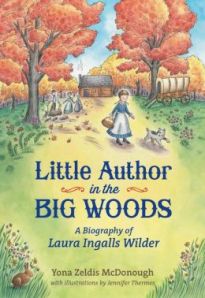 “Once upon a time, sixty years ago, a little girl lived in the Big Woods of Wisconsin, in a little gray house made of logs.” This sentence opens Little House in the Big Woods by Laura Ingalls Wilder, the first in a series of children’s books that gave middle grade readers a glimpse into the life of America’s pioneer families. And for some–like myself–this would be the start of a lifelong desire to learn more about the real life of Laura, her sisters Mary, Carrie, and Grace, and her parents Charles and Caroline Ingalls.
“Once upon a time, sixty years ago, a little girl lived in the Big Woods of Wisconsin, in a little gray house made of logs.” This sentence opens Little House in the Big Woods by Laura Ingalls Wilder, the first in a series of children’s books that gave middle grade readers a glimpse into the life of America’s pioneer families. And for some–like myself–this would be the start of a lifelong desire to learn more about the real life of Laura, her sisters Mary, Carrie, and Grace, and her parents Charles and Caroline Ingalls.
In a style similar to the Little House books, author Yona Zeldis McDonough has created a biography of Laura Ingalls Wilder aimed toward middle grade readers that not only helps point out the fact and the fiction behind Wilder’s classic children’s books, but also celebrates the independent mind of the Quiner and Ingalls women along the way.
McDonough’s book opens not with Wilder, but with a brief prologue discussing the life of Caroline Lake Quiner, who would one day become Caroline Ingalls. This sets the tone for the rest of this biography, as it highlights how Caroline’s mother, Charlotte, believed in higher education for girls; something Ma Ingalls also wanted for her daughters.
Told in chronological order, Little Author in the Big Woods follows Wilder’s life and the journeys she took not only with her family, but later with her husband Almanzo and daughter Rose. It talks about the hardships the Wilders faced as a young married couple and of their leaving De Smet, South Dakota to settle in Mansfield, Missouri. Readers learn about the building of the dream house on Rocky Ridge Farm and Wilder’s early career writing for the Missouri Ruralist, before moving on to the creation of the Little House series. McDonough ends with an epilogue that discusses the longevity of Wilder’s work and Michael Landon’s classic television show, Little House on the Prairie, which is based upon the books. Readers are also treated to quotes from Laura Ingalls Wilder, details on some of the games that Laura played, crafts, and recipes. Also included is a list of other writings by Wilder and a list with some of the other books about her.
While I have to admit I learned little new about Laura Ingalls Wilder as a result, I believe middle grade readers will enjoy getting to know more about her real life and the independent nature of the women in the Quiner, Ingalls, and Wilder families. With a similar writing style and design to the Little House series, readers will feel right at home with this book. Jennifer Thermes did an excellent job in capturing the essence of McDonough’s book and Wilder’s life with her beautiful illustrations. I’m thrilled to add Little Author in the Big Woods to my Laura Ingalls Wilder collection.
Rating: :) :) :) :) :)
Age Range: 8 – 12 years
Grade Level: 3 – 7
Series: Christy Ottaviano Books
Hardcover: 176 pages
Publisher: Henry Holt and Co. (BYR); First Edition edition (September 16, 2014)
Language: English
ISBN-10: 080509542X
ISBN-13: 978-0805095425
I received a copy of this book from the author. This review contains my honest opinions, which I have not been compensated for in any way.


By: C. C. Gevry,
on 8/26/2014
Blog:
The Children's and Teens' Book Connection
(
Login to Add to MyJacketFlap)
JacketFlap tags:
Young Adult fiction,
Teen fiction,
nonfiction,
Tween fiction,
Jenny Han,
Biographies,
Middle Grade books,
books for young readers,
The Summer I Turned Pretty,
The Children's and Teens Book Connection,
Little Author in the Big Woods,
Yona Zeldia McDonough,
Add a tag
I treated myself to a new book right before going on vacation. I’ve wanted to read the series for a while, but only bought the first book because I got such a deal on it. I really have too many books here to justify buying more.

Belly measures her life in summers. Everything good, everything magical happens between the months of June and August. Winters are simply a time to count the weeks until the next summer, a place away from the beach house, away from Susannah, and most importantly, away from Jeremiah and Conrad. They are the boys that Belly has known since her very first summer–they have been her brother figures, her crushes, and everything in between. But one summer, one terrible and wonderful summer, the more everything changes, the more it all ends up just the way it should have been all along.
While we were away, this one arrived in the mail. I’ll be reviewing this book for the author.

Many girls in elementary and middle school fall in love with the Little House books by Laura Ingalls Wilder. What they don’t always realize is that Wilder’s books are autobiographical. This narrative biography describes more of the details of the young Laura’s real life as a young pioneer homesteading with her family on many adventurous journeys. This biography, complete with charming illustrations, points out the differences between the fictional series as well as the many similarities. It’s a fascinating story of a much-celebrated writer.
Hope you had a great week.


With storytelling ease and pitch-perfect pacing, the following works of narrative nonfiction for older readers bring their subjects to brilliant life, elevating the sometimes-staid genre of biography to literary art form.
 Jacqueline Woodson’s memoir-in-verse Brown Girl Dreaming is so immediate that readers will feel they are experiencing the author’s childhood right along with her. Born in Ohio in 1963, Jackie moved with her family to Greenville, South Carolina, to live with her maternal grandparents. We see young Jackie grow up in historical context alongside the contexts of extended family, community (Greenville, later Brooklyn), and religion — and we trace her development as a nascent writer to her realization that “words are [her] brilliance.” The poetry sings in this extraordinary portrait of a writer as a young girl. (Penguin/Paulsen, 10–14 years)
Jacqueline Woodson’s memoir-in-verse Brown Girl Dreaming is so immediate that readers will feel they are experiencing the author’s childhood right along with her. Born in Ohio in 1963, Jackie moved with her family to Greenville, South Carolina, to live with her maternal grandparents. We see young Jackie grow up in historical context alongside the contexts of extended family, community (Greenville, later Brooklyn), and religion — and we trace her development as a nascent writer to her realization that “words are [her] brilliance.” The poetry sings in this extraordinary portrait of a writer as a young girl. (Penguin/Paulsen, 10–14 years)
 Emily Arnold McCully creates a multilayered biography of a crusading early-twentieth-century journalist in Ida M. Tarbell: The Woman Who Challenged Big Business — and Won! Readers meet young Ida growing up in Pennsylvania oil country. A curious child, Tarbell’s lessons learned from scientific inquiry led to her dogged determination to get to the bottom of an issue. McCully engagingly re-creates the era’s social context for women (famously, Tarbell didn’t believe in women’s suffrage) as well as the culture and importance of print media, allowing readers to draw their own conclusions about Tarbell’s positions and her times. (Clarion, 10–14 years)
Emily Arnold McCully creates a multilayered biography of a crusading early-twentieth-century journalist in Ida M. Tarbell: The Woman Who Challenged Big Business — and Won! Readers meet young Ida growing up in Pennsylvania oil country. A curious child, Tarbell’s lessons learned from scientific inquiry led to her dogged determination to get to the bottom of an issue. McCully engagingly re-creates the era’s social context for women (famously, Tarbell didn’t believe in women’s suffrage) as well as the culture and importance of print media, allowing readers to draw their own conclusions about Tarbell’s positions and her times. (Clarion, 10–14 years)
 Candace Fleming’s riveting book The Family Romanov: Murder, Rebellion, and the Fall of Imperial Russia appeals to the imagination as much as the intellect. Her focus is not just the Romanovs (the last imperial family of Russia), but the Revolutionary leaders and common people as well, showing how each group was the product of its circumstances and how they all moved inexorably toward the tragic yet fascinating conclusion. An epic, sweeping historical narrative. (Random/Schwartz & Wade, 12–18 years)
Candace Fleming’s riveting book The Family Romanov: Murder, Rebellion, and the Fall of Imperial Russia appeals to the imagination as much as the intellect. Her focus is not just the Romanovs (the last imperial family of Russia), but the Revolutionary leaders and common people as well, showing how each group was the product of its circumstances and how they all moved inexorably toward the tragic yet fascinating conclusion. An epic, sweeping historical narrative. (Random/Schwartz & Wade, 12–18 years)
 Demonstrating warmth, ease, and a sense of humor about herself, Katherine Paterson relates tales from her life, and from her parents’ and grandparents’, too, in Stories of My Life. The author gently ambles from story to story, looping through her youthful experiences in China and Japan, her marriage and children, and her writing. Throughout all there is a strong connection to Paterson’s childhood: “By the time I was five I had been through war and evacuation, but nothing had prepared me for the American public school system.” (Dial, 12 years and up)
Demonstrating warmth, ease, and a sense of humor about herself, Katherine Paterson relates tales from her life, and from her parents’ and grandparents’, too, in Stories of My Life. The author gently ambles from story to story, looping through her youthful experiences in China and Japan, her marriage and children, and her writing. Throughout all there is a strong connection to Paterson’s childhood: “By the time I was five I had been through war and evacuation, but nothing had prepared me for the American public school system.” (Dial, 12 years and up)
From the August 2014 issue of Notes from the Horn Book.

The post Beyond biography appeared first on The Horn Book.
By: C. C. Gevry,
on 7/17/2014
Blog:
The Children's and Teens' Book Connection
(
Login to Add to MyJacketFlap)
JacketFlap tags:
nonfiction,
World War II,
Biographies,
Corrie ten Boom,
Middle Grade books,
books for young readers,
Historical nonfiction,
The Children's and Teens Book Connection,
children's books,
children's books that teach a lesson,
Christian children's books,
Christian nonfiction,
The Torchlighters Biography Series,
book reviews,
Add a tag

From the Christian History Institute comes a biography from their Heroes of the Faith line. Corrie ten Boom and her family are watchmakers in Holland. When World War II erupts, Hitler’s army takes over their country and begins rounding up their Jewish neighbors. Read the story of how one family stood strong in faith against a great evil.
Recommended for ages 8 – 12, this biography shares the life of Corrie ten Boom, her sister, Betsie, and their father who hid Jewish people from the Nazi army during World War II. They would end up arrested, some going to concentration camps, and Corrie struggled to hold onto her faith in such darkness. Her amazing story is shared in this biography that is accompanied by historical photographs, illustrations that match the artwork from the associated DVD, interesting facts about the Netherlands, a timeline and a glossary of terms.
My daughter and I watched the DVD together. In spots, I had some difficulty understanding what the characters were saying, but overall the sound quality is good. Some of the images–though animated–might be disturbing for the youngest viewers; like the scene of the Nazis banging on doors with the butts of their guns and yanking people out onto the streets. Betsie is beaten with a club by a German guard in the camp and an ill-mannered nurse informs Corrie when she comes to see her sister that she is “in there with the other dead bodies.” Female prisoners are seen being carted off in trucks to the gas chambers; but while Corrie looks upon the gas chambers, it is not made apparent to young viewers what is going on there. So there is definitely historical accuracy worked into this production.
This is a moving story that will remind readers/viewers of the power of forgiveness and how leaning on faith can bring you through adversity. I am glad to add this book and DVD to our home library. It would also make a fabulous addition to a church library.
Rating: 





The Torchlighters Biography Series: Corrie ten Boom
Author: Kaylena Radcliff
Paperback: 85 pages
Publisher: Christian History Institute (May 1, 2014)
Language: English
ISBN-10: 1563648733
ISBN-13: 978-1563648731
List price: $9.99
DVD
Format: Multiple Formats, Animated, Color, NTSC
Language: English
Region: All Regions
Aspect Ratio: 1.33:1
Number of discs: 1
Rated: NR (Not Rated)
Studio: Vision Video
DVD Release Date: October 25, 2013
Run Time: 34 minutes
I received a copy of this book and DVD from the Christian History Institute. This review contains my honest opinions, which I have not been compensated for in any way.
This post first appeared at the Christian Children’s Authors blog.


By: C. C. Gevry,
on 6/29/2014
Blog:
The Children's and Teens' Book Connection
(
Login to Add to MyJacketFlap)
JacketFlap tags:
The Children's and Teens Book Connection,
Christian nonfiction,
Heroes of Faith,
Torchlighters Biography Series,
Middle Grade books,
books for young readers,
Historical nonfiction,
children's books,
books that teach children a lesson,
Christian children's books,
World War II,
Outer Banks,
Corrie ten Boom,
Biographies,
Add a tag
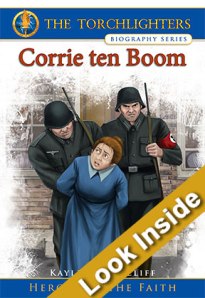
We’re taking a two week break to rest and relax on the Outer Banks of North Carolina. I brought some books with me, as is my usual practice. Only one of them ended up being for the youth market.
Corrie ten Boom and her family are watchmakers in Haarlem, Holland, where they give what little they have to spread God’s love and help others. But everything changes when World War II erupts and Hitler’s army takes over their country. As the Nazis round up Corrie’s Jewish neighbors and send them to deadly concentration camps, she knows that something must be done to stop them. But what can one small family do in the face of such great evil?
Read the amazing true story of Corrie ten Boom, a Torchlighter® hero of the faith, and discover how her obedience to God saved lives and continues to inspire others today.
Paperback: 85 pages
Publisher: Christian History Institute (May 1, 2014)
Language: English
ISBN-10: 1563648733
ISBN-13: 978-1563648731
My hope is to blog a few times while we’re away, so don’t go far.


By:
Nina Schuyler,
on 6/20/2014
Blog:
The Children's Book Review
(
Login to Add to MyJacketFlap)
JacketFlap tags:
Ages 4-8,
History,
Ages 9-12,
Picture Books,
Book Lists,
Amelia Earhart,
Scholastic,
Biographies,
featured,
Famous People,
Gandhi,
Mary GrandPré,
Brad Meltzer,
Ralph Waldo Emerson,
Elizabeth Cody Kimmel,
Barbara Kerley,
Dial books,
Edwin Fotheringham,
Giuliano Ferri,
Cultural Wisdom,
Barb Rosenstock,
Christopher Eliopoulos,
Afred A. Knopf Books for Young Readers,
Vasya Kadinsky,
Add a tag
There's a fine art to turning a great life into something digestible for a child. The art lies in finding the essence, an almost haiku-like writing that condenses, getting only the most salient details on the page. Each of the following biographies rises to that fine art.
View Next 25 Posts
 During the 2016 Boston Globe-Horn Book Colloquium Carol Boston Weatherford and Ekua Holmes spoke together about the art of writing about other people. During the speech they mentioned how part of their job is to break down “the canonical boundaries of biography.” Too often kids read the same biographies about the same people over and over again. The canon, such as it is. There were a bunch of perfectly good biographies out about those folks this year. I prefer the more obscure figures and the people who don’t usually get studied.
During the 2016 Boston Globe-Horn Book Colloquium Carol Boston Weatherford and Ekua Holmes spoke together about the art of writing about other people. During the speech they mentioned how part of their job is to break down “the canonical boundaries of biography.” Too often kids read the same biographies about the same people over and over again. The canon, such as it is. There were a bunch of perfectly good biographies out about those folks this year. I prefer the more obscure figures and the people who don’t usually get studied.


































 Dear Malala, We Stand With You by Rosemary McCarney with Plan International
Dear Malala, We Stand With You by Rosemary McCarney with Plan International The Girl from the Tar Paper School: Barbara Rose Johns and the Advent of the Civil Rights Movement by Teri Kanefield
The Girl from the Tar Paper School: Barbara Rose Johns and the Advent of the Civil Rights Movement by Teri Kanefield Rad American Women A-Z by Kate Shatz, illustrated by Miriam Klein Stahl
Rad American Women A-Z by Kate Shatz, illustrated by Miriam Klein Stahl



 Tricky Vic: The Impossibly True Story of the
Man Who Sold the Eiffel Tower
Tricky Vic: The Impossibly True Story of the
Man Who Sold the Eiffel Tower


 The Boy Who Harnessed the Wind: Young Readers Edition
The Boy Who Harnessed the Wind: Young Readers Edition Draw What You See: The Life and Art of Benny Andrews
Draw What You See: The Life and Art of Benny Andrews Unbroken: An Olympian’s Journey from
Airman to Castaway to Captive
Unbroken: An Olympian’s Journey from
Airman to Castaway to Captive


 Jacqueline Woodson’s memoir-in-verse Brown Girl Dreaming is so immediate that readers will feel they are experiencing the author’s childhood right along with her. Born in Ohio in 1963, Jackie moved with her family to Greenville, South Carolina, to live with her maternal grandparents. We see young Jackie grow up in historical context alongside the contexts of extended family, community (Greenville, later Brooklyn), and religion — and we trace her development as a nascent writer to her realization that “words are [her] brilliance.” The poetry sings in this extraordinary portrait of a writer as a young girl. (Penguin/Paulsen, 10–14 years)
Jacqueline Woodson’s memoir-in-verse Brown Girl Dreaming is so immediate that readers will feel they are experiencing the author’s childhood right along with her. Born in Ohio in 1963, Jackie moved with her family to Greenville, South Carolina, to live with her maternal grandparents. We see young Jackie grow up in historical context alongside the contexts of extended family, community (Greenville, later Brooklyn), and religion — and we trace her development as a nascent writer to her realization that “words are [her] brilliance.” The poetry sings in this extraordinary portrait of a writer as a young girl. (Penguin/Paulsen, 10–14 years) Emily Arnold McCully creates a multilayered biography of a crusading early-twentieth-century journalist in Ida M. Tarbell: The Woman Who Challenged Big Business — and Won! Readers meet young Ida growing up in Pennsylvania oil country. A curious child, Tarbell’s lessons learned from scientific inquiry led to her dogged determination to get to the bottom of an issue. McCully engagingly re-creates the era’s social context for women (famously, Tarbell didn’t believe in women’s suffrage) as well as the culture and importance of print media, allowing readers to draw their own conclusions about Tarbell’s positions and her times. (Clarion, 10–14 years)
Emily Arnold McCully creates a multilayered biography of a crusading early-twentieth-century journalist in Ida M. Tarbell: The Woman Who Challenged Big Business — and Won! Readers meet young Ida growing up in Pennsylvania oil country. A curious child, Tarbell’s lessons learned from scientific inquiry led to her dogged determination to get to the bottom of an issue. McCully engagingly re-creates the era’s social context for women (famously, Tarbell didn’t believe in women’s suffrage) as well as the culture and importance of print media, allowing readers to draw their own conclusions about Tarbell’s positions and her times. (Clarion, 10–14 years) Candace Fleming’s riveting book The Family Romanov: Murder, Rebellion, and the Fall of Imperial Russia appeals to the imagination as much as the intellect. Her focus is not just the Romanovs (the last imperial family of Russia), but the Revolutionary leaders and common people as well, showing how each group was the product of its circumstances and how they all moved inexorably toward the tragic yet fascinating conclusion. An epic, sweeping historical narrative. (Random/Schwartz & Wade, 12–18 years)
Candace Fleming’s riveting book The Family Romanov: Murder, Rebellion, and the Fall of Imperial Russia appeals to the imagination as much as the intellect. Her focus is not just the Romanovs (the last imperial family of Russia), but the Revolutionary leaders and common people as well, showing how each group was the product of its circumstances and how they all moved inexorably toward the tragic yet fascinating conclusion. An epic, sweeping historical narrative. (Random/Schwartz & Wade, 12–18 years) Demonstrating warmth, ease, and a sense of humor about herself, Katherine Paterson relates tales from her life, and from her parents’ and grandparents’, too, in Stories of My Life. The author gently ambles from story to story, looping through her youthful experiences in China and Japan, her marriage and children, and her writing. Throughout all there is a strong connection to Paterson’s childhood: “By the time I was five I had been through war and evacuation, but nothing had prepared me for the American public school system.” (Dial, 12 years and up)
Demonstrating warmth, ease, and a sense of humor about herself, Katherine Paterson relates tales from her life, and from her parents’ and grandparents’, too, in Stories of My Life. The author gently ambles from story to story, looping through her youthful experiences in China and Japan, her marriage and children, and her writing. Throughout all there is a strong connection to Paterson’s childhood: “By the time I was five I had been through war and evacuation, but nothing had prepared me for the American public school system.” (Dial, 12 years and up)


So many interesting books about so many interesting people! Thanks for bringing them to our attention.
AAAUUUGHHHHH I missed the Gershwin book for my own roundup!!!
On the upside, we live in a world in which a picture book bio of Esquivel AND a picture book bio of the man who invented the Super-Soaker exist.
(I really enjoyed both, btw.)
(And thanks for the pointers to Fancy Party Gowns — out mid-Jan — and Step Right Up, both of which sound fascinating!!)
Happy holidays!
Oh, shoot. Is Fancy Party Gowns a 2017? Doggone it. I’m going to have to excise that.